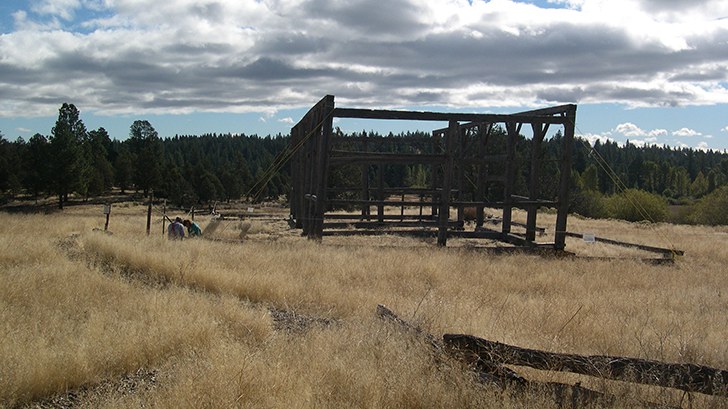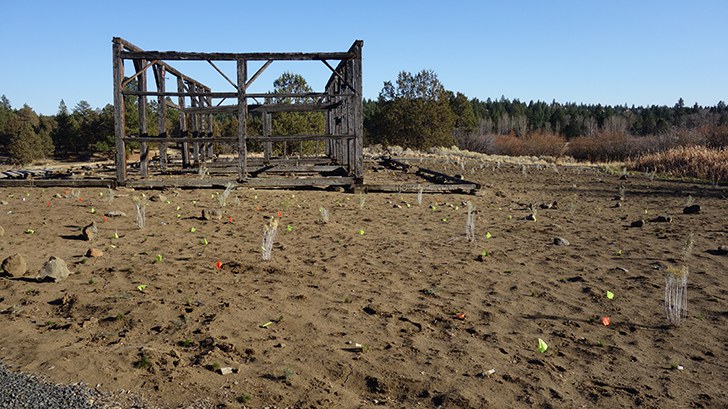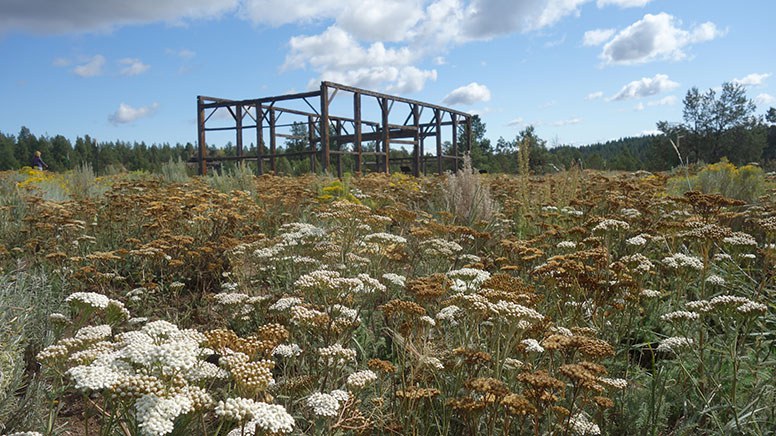The Land Trust was busy during the month of October working to restore Camp Polk Meadow Preserve! Volunteers and paid crews helped plant native grasses, wildflowers, and shrubs in the Hindman Springs portion of the Preserve as part of a multi-year restoration project.
Native plant restoration first starts with soil solarization (learn more about that cool process that involves lots of plastic!). Once the soil has been solarized we can plant. In 2018 we solarized 1/2 acre and then planted 3,700 native plants. These were mostly bunchgrasses, wildflowers and shrubs for the drier areas with some wetland wildflowers, sedges, and rushes to supplement and diversify the area near the spring and ponds. We also spread native seed--six grass species and two wildflower species, yarrow and blue flax. This year, we solarized 1/3 acre and have planted 2,500 new native plants and again spread native seed.
So, how are all these plants doing?
In short, great, thanks to lots of care and tending from staff and volunteers! Volunteers spent some of the past winter helping put plants back in the ground that were either pulled out by deer or pushed out by frost. Then, there was lots of weeding in spring! Solarization did a great job of reducing nonnative annual grass germination, but there were seed species that the solarization heat did not kill and areas that were not solarized that needed plenty of attention. Come summer, our new plants needed water! The first summer, even for drought-adapted species, is always hard on plants so we set up an irrigation system and had volunteers help with watering. Huge thanks to all the volunteers who helped with deer patrol, weeding, and watering this past year!
We were also pleased to see that plant survival and seed germination was better than expected! The transformation of a sea of cheatgrass and tumble mustard into diverse native pollinator habitat is exciting. While, several “weedy” native species showed up this spring (yes, natives can be invasive too), we thinned those fast-growing species to make room for some of the slower growing natives. Similarly, the native yarrow was VERY successful this year. Yarrow loves disturbance, and the "yarrow blanket” we currently have should decrease over time. In the meantime, the yarrow is an important plant for pollinators and may be protecting grass seedlings from the hot sun in the driest months.
The native plant restoration at Hindman Springs will take many years to mature and evolve to a state where it can take care of itself. In the meantime we will continue to manage it, including weeding and monitoring changes. Here's a visual of all our progress:



This restoration is part of a larger effort to preserve and restore the historic Hindman Springs portion of Camp Polk Meadow Preserve. We re-built the Hindman Springs Area trail in August of 2017, stabilized the Hindman barn in January of 2018, created a new historic interpretive trail in June 2019, and have been working to restore native vegetation since 2018.
The Hindman Springs portion of Camp Polk Meadow Preserve has a long history as a historic wagon road stopping station, farm, and ranch--150 years of history before the Land Trust acquired the Preserve. This use had an impact on native vegetation in and around the barn and has led to a major effort to restore native plants in the area.
Many thanks to the Oregon Community Foundation Historic Trails Fund, the Roundhouse Foundation, the Laird Norton Foundation, East Cascade Audubon Society, and private donors for making the Hindman Springs Area Preservation and Restoration possible.
Learn more:
- About Camp Polk Meadow Preserve
- About the history of Camp Polk Meadow Preserve
- About the Hindman Springs Preservation and Restoration project


